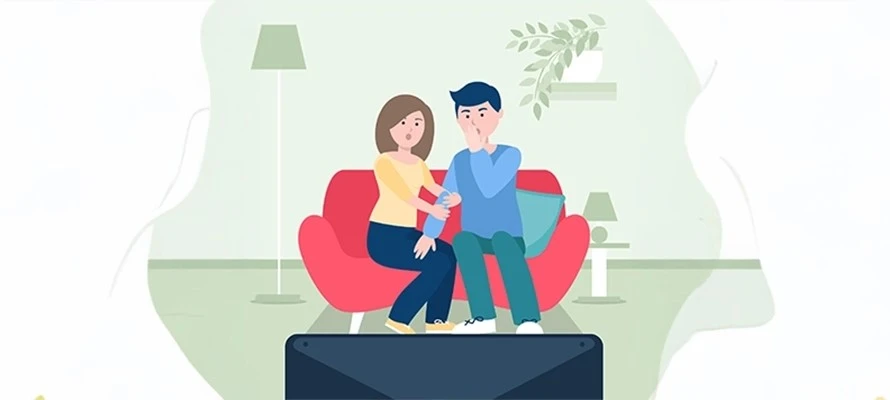Anxious attachment is a pattern in the way we connect with others that takes root in our earliest years. It’s shaped by the quality of care we received as infants and young children, and it can have a lasting impact on how we approach relationships as adults. People with this attachment style often feel a strong need for closeness and constant reassurance, coupled with a deep fear of being rejected or abandoned. Wanting connection is completely human but when that need feels urgent, all-consuming, and easily shaken by small changes, it can make relationships feel emotionally exhausting.
For someone with anxious attachment, little things can feel very big. A delayed text reply, a shift in someone’s tone, or even a partner being preoccupied for a day can spark worries about whether the relationship is okay. The mind starts to overthink, replaying conversations, reading into silences, and looking for signs that something is wrong. This isn’t because the person is “too sensitive” it’s because their nervous system has learned to stay on high alert when it comes to connection
This pattern often begins in childhood. According to attachment theory, pioneered by John Bowlby, our first relationships with caregivers teach us what to expect from others. If a caregiver is sometimes warm and responsive but other times distracted, emotionally unavailable, or inconsistent, a child never quite knows which version of them will show up. Over time, this unpredictability plants a seed of uncertainty: “Will my needs be met this time, or will I be left alone?” The child’s brain and body adapt by becoming extra vigilant, scanning for signs of closeness and signals of danger.
There are several early experiences that can contribute to this style of attachment:
- Inconsistent caregiving — mixed responses to needs, sometimes meeting them, sometimes ignoring them.
- Caregiver stress or mental health struggles — when parents are coping with their own unresolved issues, it can affect how consistently they can be emotionally present.
- Neglect or emotional absence — when emotional needs aren’t reliably met, it reinforces the fear of being left alone.
- Family conflict or instability — growing up in a home with frequent arguments, breakups, or trauma can increase a child’s sense of insecurity.
These early dynamics shape how the person approaches closeness later in life. In adulthood, anxious attachment might show up as needing frequent reassurance, fearing that a relationship will end without warning, overanalyzing small changes in a partner’s mood, or feeling distressed by conflict and distance. Some people with this attachment style also experience intense jealousy or compare themselves to others, worrying they’re “not enough” to keep their partner’s interest. Others may put their own needs aside in order to hold on to the relationship, believing that closeness depends on constant effort or self-sacrifice.
The emotional toll can be heavy. Living with anxious attachment often means feeling on edge, as though you’re always waiting for the other shoe to drop. Your mind becomes a detective, searching for clues that someone might leave or lose interest. Over time, this can lead to anxiety, lowered self-esteem, and emotional burnout. The irony is that these fears can sometimes create the very tension that makes relationships harder, which then reinforces the original worry: “See, I knew they might leave.”
The important thing to remember is that anxious attachment isn’t a personality flaw it’s a learned response to an environment that felt unpredictable. And like any learned response, it can be unlearned or reshaped. Healing starts with self-awareness: noticing your triggers, naming your emotions before reacting, and recognizing the difference between a present-day reality and an old pattern from childhood.
From there, building emotional regulation skills is key. Grounding exercises, deep breathing, and mindfulness practices can help calm your nervous system so you can respond rather than react. Strengthening your sense of self-worth reminding yourself that you are lovable and deserving of care without having to “earn” it helps create internal security. Communicating your needs openly and respectfully makes relationships clearer and less anxiety-provoking. And choosing relationships where people are consistent, reliable, and emotionally available gives your nervous system the chance to learn what real safety feels like
Therapy can be especially powerful in this process. Attachment-focused approaches, such as Emotionally Focused Therapy or schema therapy, can help you explore where your patterns came from, work through the original hurts, and learn new, secure ways of relating. Over time, you begin to trust that you can survive moments of distance, handle disagreements without fearing abandonment, and feel safe in your own worth.
Anxious attachment is not a life sentence. It’s a reflection of what your younger self had to adapt to and with patience, compassion, and practice, you can teach yourself a new way of being in relationships. At Aayaas Counselling Center, we help individuals understand their attachment patterns, build emotional resilience, and create connections that are not only loving but also steady, healthy, and deeply fulfilling.

